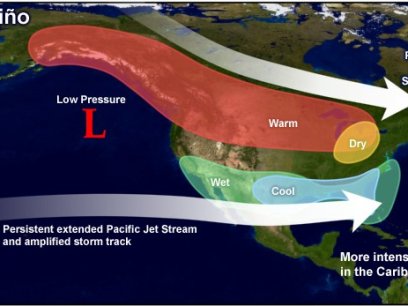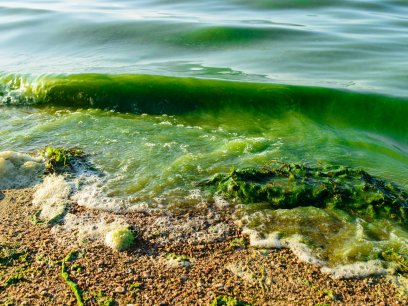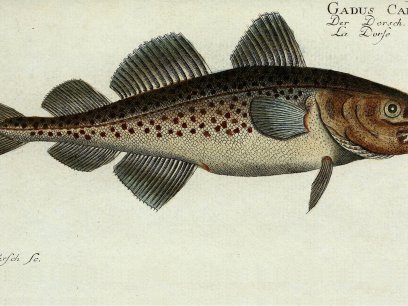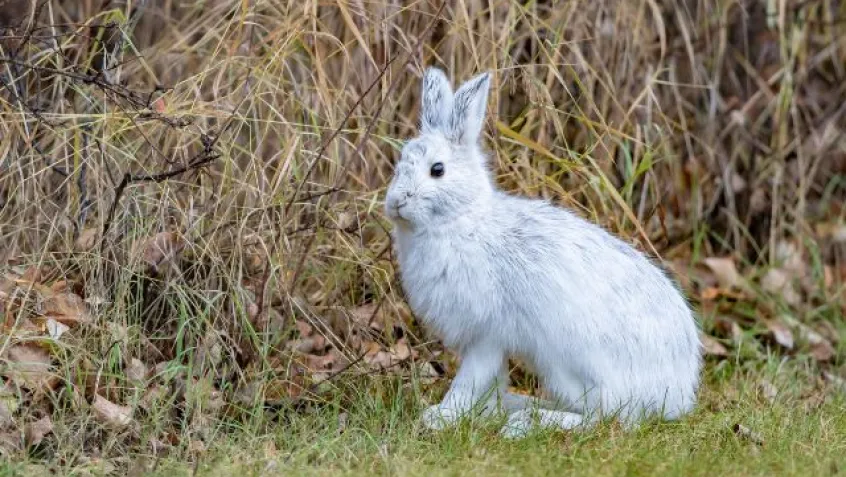
Climate change is impacting wildlife across the United States in a variety of ways. Some animal species are able to adapt to changing environmental conditions quickly, but others are not.
The effects of climate change can be seen during the fall migration season, when landscapes start to shift and animals begin preparations for the winter months ahead. Warmer weather often means that plants bloom earlier or expand into historically cooler locations, thereby changing ecosystems and animals’ migration patterns. A 2011 study found that plants and wildlife have moved to higher elevations at a median rate of 36 feet per decade throughout the last century. These significant shifts can also make room for invasive species to move in.
The most extreme example of this is occurring in the Arctic. Researchers are studying how different species of Arctic animals are affected by warming temperatures as they search for food and places to raise their young. They have discovered that, because predator species are responding differently to increased temperatures than prey species, climate change is creating a mismatch between predators and the prey they hunt for food.
Read more examples below of how North American mammals, birds, amphibians, and marine life are impacted by climate change.
Mammals
Warmer temperatures and reduced precipitation across the western US have increased the size of wildfires and worsened insect and disease outbreaks, causing a decrease in habitat for woodland creatures.
Species of mammals that are particularly at risk of significant habitat and population losses as a result of a changing climate include those that are adapted to mountain environments and those dependent on sea ice.
- Caribou: Colder temperatures and snowfall are indicators that caribou use to decide when to begin their fall migration. Over the last 30 years, temperatures have stayed warmer later in the year, delaying the start of the caribou migration. Warmer weather also results in increased insect populations, which stress caribou.
- Polar bears: In 2008, polar bears were the first species to be listed as “threatened” under the Endangered Species Act due to the impacts of climate change. Melting Arctic ice reduces their access to habitat and seal hunting ranges.
- Snowshoe hares: This rabbit species evolved to turn white in the winter to blend in with snow. However, climate change is melting snow earlier, leaving the snowshoe hare increasingly exposed without camouflage.
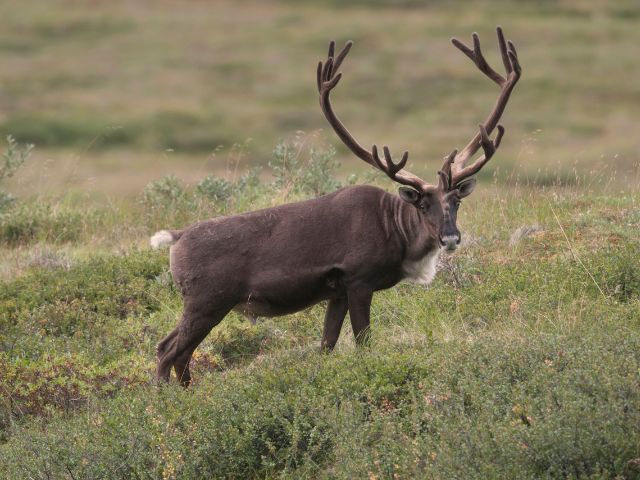
Birds
Migratory birds rely on their internal biological clocks to tell them when to arrive and depart from breeding grounds. Their movements are synchronized with weather conditions, peak food availability, and availability of nesting sites. A warming climate can result in a cascade of environmental changes that throw this synchronization out of whack. Arriving to less-than-ideal conditions at their breeding grounds can reduce the reproductive success of many bird populations.
Birds that do not migrate also face challenges related to a changing climate. Changes in precipitation and temperature patterns impact food availability and the timing of resident birds' breeding. As habitat conditions change for both migratory and non-migratory species, some birds may travel to other regions that fit their climatic range. In their new habitats, these birds may face increased competition for limited food resources and encounter new predators or competitors that make it difficult or impossible to survive.
- Atlantic puffins: Over the past several years, this colorful marine bird has faced delayed breeding seasons and low rates of chick survival as warming ocean temperatures in the Gulf of Maine pushed major food sources farther north. However, recent studies have indicated that puffin populations may be on the rebound, showing the uneven and complex impacts of climate change.
- Bald eagles: In Alaska, America’s national bird relies on the annual salmon run during its breeding season. While warmer April temperatures have been associated with higher numbers of bald eagle nestlings, increased glacial melt can also make it harder for the birds to see salmon in rivers while hunting.
- Shorebirds: While shorebirds like plovers and sandpipers have historically migrated to the Arctic to lay their eggs in a safe place with fewer predators, researchers have noted that rates of nest predation linked to climate change have increased threefold over the past 70 years.
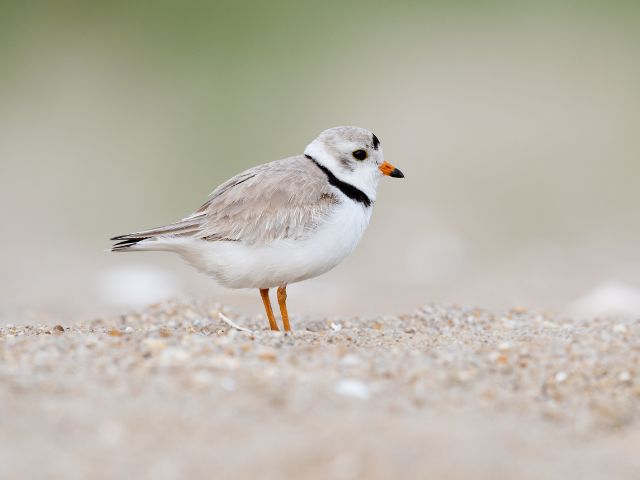
Amphibians
Globally, about one-third of amphibian species, including frogs, salamanders, and newts, are at risk of extinction. Several biological factors make amphibians more sensitive to environmental disruptions than other species, including their unique lifecycle stages (which rely on both land and water ecosystems), their skin (which is a sensitive respiratory organ), and their central position in food webs.
- Mountain yellow-legged frogs: These frogs, located in California’s Sierra Nevada mountains, provide a good example of how climate change increases the severity of environmental threats that amphibians face, including habitat loss and pollution. The mountain yellow-legged frog has disappeared from 70-90% of its historic range over the past several decades due to a variety of factors, including climate change decreasing mountain snowpack and summer rainfall, drying the ponds where the frogs live and breed.
- Wood frogs: In contrast, this frog species has been able to adapt quickly to changing environmental conditions. One of the only amphibians found in the Arctic, it freezes in the winter and thaws out in the spring to continue its life cycle. Scientists have found that wood frogs have been able to rapidly adjust the timing of their breeding to match with warmer air temperature and spring runoff.
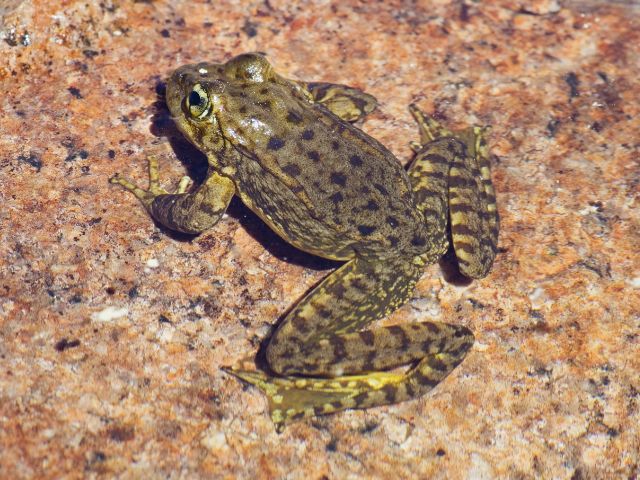
Marine Life
As ocean water temperatures warm, the distribution of many marine species—including those we rely on for food—is shifting due to their dependence on specific water temperatures and nutrient availability. Both warm and cold-loving marine species are migrating to different places and changing their breeding and feeding patterns due to warming waters.
Not all marine species are responding to changing temperatures and nutrient availability at the same time, which can disrupt the food web. Many marine creatures time their reproductive and migratory cycles around prey. When these patterns are disrupted due to a changing climate, they can also change predator-prey relationships and increase mass strandings, starvation, and poor reproductive success.
Rising sea levels are reducing nesting habitats and contaminating freshwater habitats with saltwater. Increased levels of carbon dioxide in the atmosphere are making the oceans more acidic and decreasing the ability of shells and other calcium carbonate structures, such as coral skeletons, to form.
- Pacific cod: These fish have expanded their summer range into the northern Bering Sea to find food as climate change warms their historic habitats. However, this part of the ocean remains too cold for the specific temperatures that Pacific cod eggs need to develop and hatch, which could prevent the species from adapting.
- Sea turtles: Sea level rise and stronger storms due to climate change erode beach habitats where sea turtles lay their eggs. Additionally, the temperature of beach sand influences the sex of offspring, meaning that a warmer climate may create a shortage of male sea turtles.
- Whales: The ocean’s largest species are especially susceptible to the impacts of climate change because they sit at the top of the food web. For example, unpredictable ice patterns are pushing beluga whales out of their normal migration routines due to the increased threat of getting trapped in the ice. They also often have to dive deeper, and longer, to find food.

The Impacts of Climate Change and How You Can Take Action
You can learn more about animal migration and the impacts of climate change by exploring these resources from NEEF:
- Animal Migration Activity Guide: Download this guide for use in the classroom or at home to encourage elementary-age students to use STEM skills to explore migration paths and get involved with citizen science.
- Go Leaf Peeping: Learn how the weather impacts the changing colors of autumn leaves and download a tree toolkit from NEEF to dig deeper into everything that trees do for us.
- Navigate America’s Flyways: Explore how climate change is impacting the flyways that migratory birds depend on.
There are many ways that we can take action to mitigate the effects of climate change, including:
- Reduce Your Greenhouse Gas Emissions: Follow these tips from the National Park Service to reduce your climate impact at home and when visiting public lands.
- Plant a Garden: Invite migratory wildlife, including pollinators, to your own backyard by following the National Wildlife Federation’s recommendations for creating a garden that provides food, water, and shelter.
- Protect Water Quality: Download this infographic from NEEF to help amphibians that are sensitive to water pollution and other wildlife by taking simple steps to protect water quality in the ponds, streams, and rivers near where you live.
